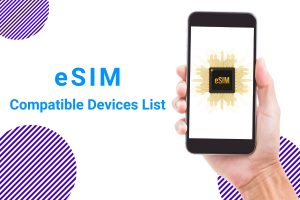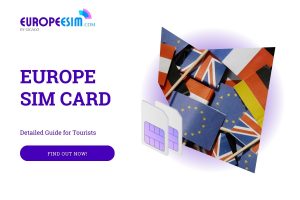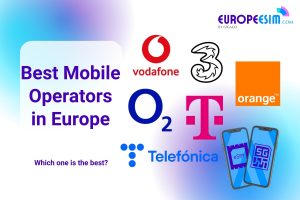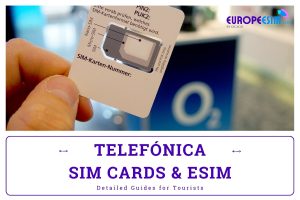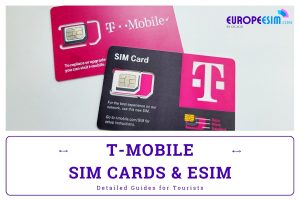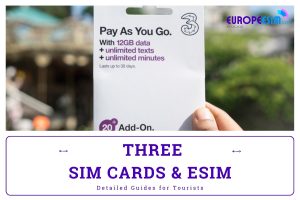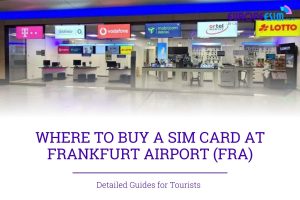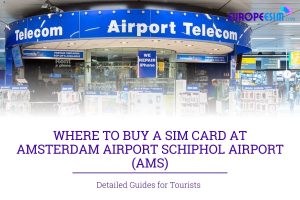Orange is a major telecommunications provider in Europe, offering mobile connectivity across multiple countries. For travelers visiting Europe, an Orange SIM card can provide affordable calling, texting, and data during your trip. This guide covers everything you need to know about getting connected with Orange while in Europe.
Table of Contents
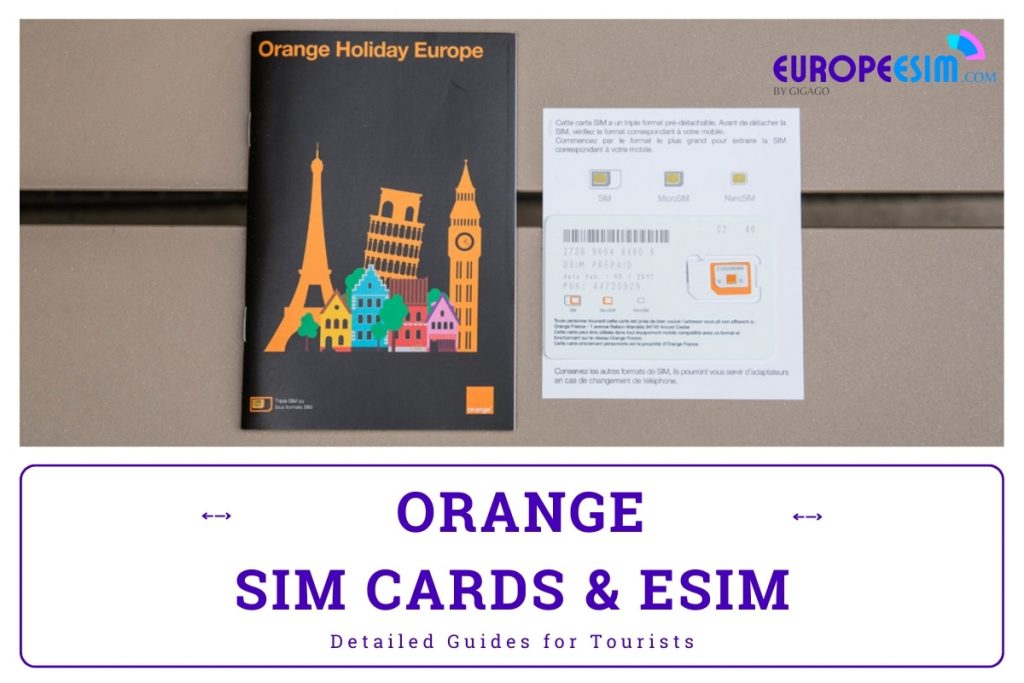
I. Quick Facts About Orange in Europe
Orange operates in 8 European countries: Belgium, France, Luxembourg, Moldova, Poland, Romania, Slovakia, and Spain. It has over 200 million customers across Europe, placing it among the largest mobile carriers on the continent.
Some key facts about Orange in Europe:
- Market Size: Orange is one of the largest telecom operators in Europe, with a strong presence in Europe and serving over 280 million mobile customers.
- Network: Orange boasts a vast 4G/LTE/5g network covering almost the entirety of its European footprint. Orange consistently ranks among the top operators in terms of network performance and reliability in Europe.
- Services: Orange offers a variety of mobile plans with different data allowances, calling minutes, and text messages to cater to various customer needs. The company provides fixed line and broadband, a diverse range of TV channels, often bundled with mobile plans for competitive pricing.
So if you’re visiting any major destinations Orange covers in Europe, it has the network capabilities and travel products to keep your smartphone connected affordably.
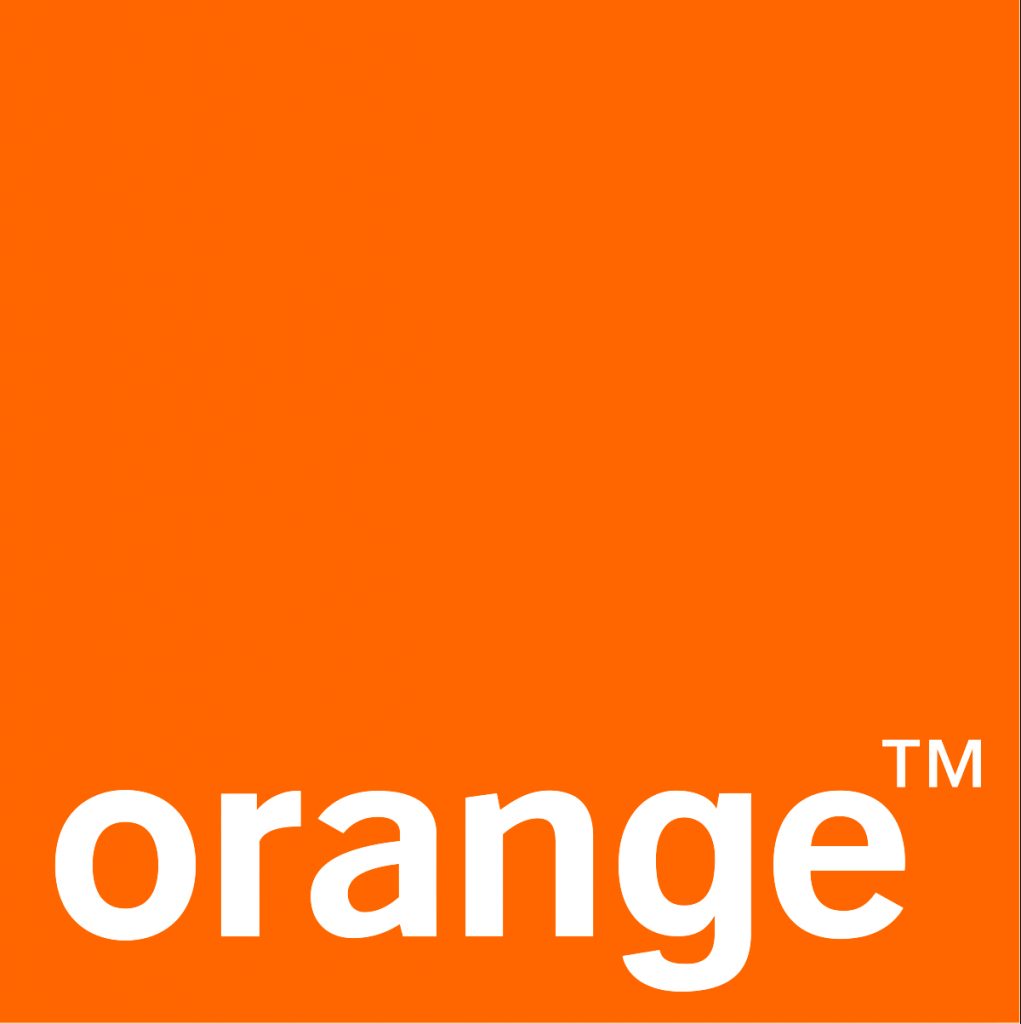
II. Orange Coverage and Speed in Europe
When traveling in Europe, Orange has extensive mobile network coverage options across multiple countries. It also continues expanding and upgrading its networks to deliver fast speeds for data and calling.
1. Orange Coverage
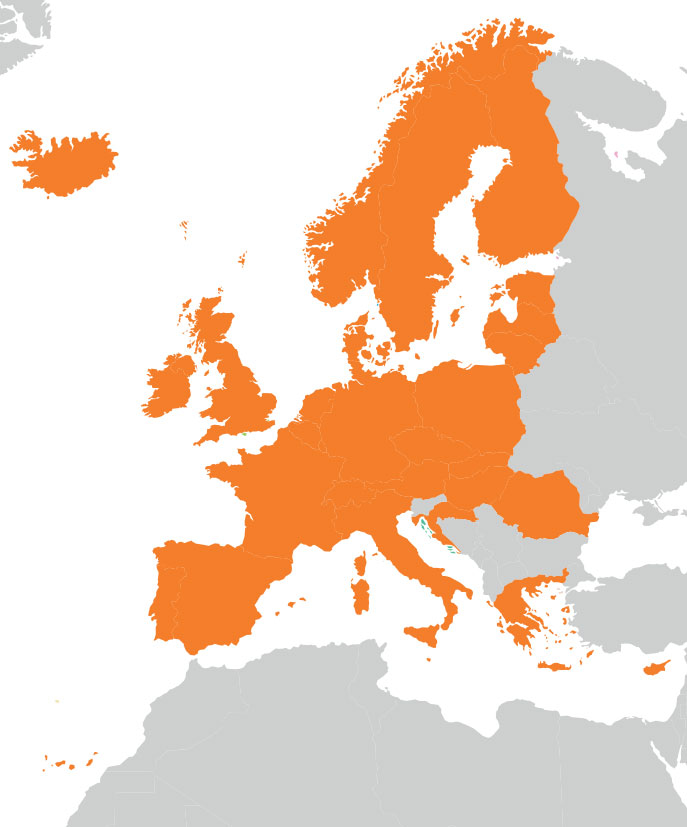
In France, Spain, Poland, and other European countries, it maintains strong coverage footprints:
1.1. Northern Europe:
In Northern Europe, its presence and coverage can be analyzed across several countries:
- United Kingdom: Orange previously operated under the EE brand, which merged with T-Mobile. Coverage is extensive, particularly in urban areas.
- Ireland: Orange does not have its own network but partners with local operators. Coverage is generally good in urban centers.
- Nordic Countries – Norway, Sweden, Denmark, Finland: Orange has a limited direct presence but partners with local networks. Coverage varies, with urban areas well-served but rural regions having less consistent service.
- Baltic States – Lithuania, Latvia, Estonia: Orange does not have a strong direct presence but may partner with local operators. Coverage is decent in urban areas, though less reliable in rural parts.
Orange has a stronger presence in the following areas:
- United Kingdom: Through EE, Orange benefits from one of the largest network covers in the UK, with high-speed 4G and growing 5G availability.
- Sweden: Collaboration with local carriers allows for substantial coverage, especially in urban zones.
- Denmark: Similar to Sweden, partnerships enhance coverage in both urban and suburban areas.
Network: Orange supports advanced technologies (4G, 5G) in areas where it has a strong presence, particularly in the UK and Sweden. In countries where Orange does not operate directly, partnerships with local operators can impact the quality of service.
1.2. Southern Europe:
Coverage: Orange has a varied but significant presence in Southern Europe, primarily through its subsidiaries and partnerships. Coverage across the region includes:
- Spain: Orange is one of the leading providers, offering extensive 4G and growing 5G coverage, particularly in urban areas.
- Italy: Orange operates indirectly through partnerships, providing decent coverage, especially in metropolitan regions.
- Greece: Orange has a presence through local operators, ensuring reasonable coverage in urban centers but less so in rural areas.
- Portugal: Similar to Greece, Orange collaborates with local networks to offer coverage, with urban areas being better served.
- In smaller markets like Malta, Montenegro, and the Balkans (Albania, Bosnia and Herzegovina, North Macedonia, Serbia), coverage can be limited and varies significantly by region.
Presence: Orange has a strong presence in Spain, where it is a leading provider with extensive coverage. In Italy, its presence is much weaker, relying on partnerships instead of operating its own network.
While it collaborates in Greece and Portugal, the impact is less significant compared to Spain. In smaller markets like Albania, Bosnia and Herzegovina, and Montenegro, coverage is limited and primarily through local partnerships.
Network: In Spain, Orange supports advanced technologies, including robust 4G and expanding 5G networks. In smaller markets, the quality of service is influenced by local operators, leading to variability.
1.3. Western Europe:
Coverage: Orange has a significant presence in Western Europe, primarily through its subsidiaries and partnerships. Coverage varies by country:
- France: Orange is the largest telecommunications provider, offering extensive coverage and high-quality services, including advanced 4G and 5G networks.
- Belgium: Orange operates as a major player, providing solid coverage, especially in urban areas.
- Luxembourg: Orange has a strong presence, offering comprehensive services and reliable network quality.
- Netherlands: Orange has a limited presence through partnerships, mainly serving as a mobile virtual network operator (MVNO).
- Germany: Orange does not have a direct consumer presence but partners with local operators.
- Austria, Switzerland, Liechtenstein, Monaco: In these countries, Orange has limited direct operations, relying on local partnerships for coverage.
Strong Presence: Orange has a strong presence in Western Europe, especially in France, where it is the largest provider with extensive coverage. In Belgium, it also delivers reliable services, particularly in urban areas, and maintains a solid presence in Luxembourg.
Network: In France and Belgium, Orange supports advanced technologies, including robust 4G and expanding 5G networks.
1.4. Eastern Europe:
Coverage:
Orange’s presence in Eastern Europe varies significantly across countries, primarily through subsidiaries and partnerships:
- Poland: A leading provider with extensive coverage and high-quality 4G and 5G services.
- Romania: Strong market position with broad coverage and competitive offerings, particularly in urban areas.
- Czech Republic: Notable presence with reliable coverage and a range of services.
- Bulgaria: Operates under a local brand, providing good urban coverage.
- Hungary: Primarily operates through partnerships, impacting market influence.
- Slovakia: Recognized for Consistent Quality, offering reliable services and competitive performance.
In contrast, in Belarus, Moldova, and Ukraine, Orange has limited or no direct presence, relying on local operators.
Strong Presence: Orange has a strong presence in several Eastern European countries. In Poland, it is a leading provider with extensive coverage. Romania sees Orange as a major player, offering broad urban coverage and competitive services. The company also maintains reliable service quality in the Czech Republic and good coverage in Bulgaria.
Network: In countries with a strong presence, like Poland and Romania, Orange supports advanced technologies, including robust 4G and expanding 5G networks.
Overall:
Orange is a leading telecom provider in Europe, excelling in Western Europe, particularly in France and Belgium, with strong 4G and 5G coverage. In Eastern Europe, Orange leads in Poland, Romania, the Czech Republic, and Slovakia, known for reliable service quality. However, it has a weaker presence in Belarus, Moldova, and Ukraine, relying on local partnerships. Overall, Orange’s success is driven by strong urban coverage and technological advancements, despite challenges in competitive markets.
2. Orange Speed
Orange offers varying internet speeds across its European regions due to factors like infrastructure investment and population density. Here’s a concise overview:
- Northern Europe: Orange does not operate directly but partners with local providers. Users can expect competitive 4G speeds averaging around 50-100 Mbps in urban areas, with emerging 5G networks potentially.
- Western Europe: particularly in France, Orange excels with 4G speeds averaging 80-150 Mbps, while 5G can achieve speeds of up to 1 Gbps or more. Belgium also shows strong performance, with similar speed metrics.
- Southern Europe: Orange delivers solid speeds in Spain, where 4G averages about 60-120 Mbps, and 5G speeds can reach up to 1 Gbps. In Italy, speeds average around 40-80 Mbps, facing strong competition from local providers.
- Eastern Europe: Orange offers competitive speeds of about 50-100 Mbps for 4G in Poland, Slovakia, and Romania, with 5G developing towards speeds of up to 1 Gbps. However, in Belarus and Moldova, speeds can vary, often falling below 50 Mbps due to limited infrastructure.
Overall, Orange provides strong speeds across Europe, with Western Europe leading (up to 1 Gbps), followed by Southern and Eastern Europe (50-150 Mbps), while in Northern Europe, speeds are dependent on local partnerships.
III. Orange Connectivity Options for Travelers to the EU
For travelers headed to Europe, Orange has two main connectivity options to access its networks:
| Option | Description | Pros | Cons |
| Prepaid SIM Card | Physical SIM card purchased before or during travel, activated with a local plan (data, calls, texts). | Easy to obtain. Wide network coverage. Potentially cheaper for longer stays | Requires phone unlock. Needs physical installation. May incur setup fees |
| eSIM | Virtual SIM card downloaded onto your phone, activated with a local plan. | Convenient, no physical card needed. Easy to switch between plans. Can activate before travel | Requires compatible device |
| Roaming | Using your home mobile service plan while abroad. | No need for additional SIM or eSIM. Familiar phone number and service | Potentially expensive data charges. May have limited call/text allowances. Not guaranteed to work in all areas |
Recommendation:
- Short trip (less than 2 weeks): Prepaid SIM Card with a smaller data package is your best bet. Consider Orange Holiday Europe SIM offering 15GB or 20GB for 14 days.
- Medium trip (2-3 weeks): eSIM with a moderate data package (20GB-30GB) offers convenience and flexibility.
- Long trip (3 weeks+): Negotiate with your home operator for roaming packages or consider local SIM cards for extended stays in specific EU countries. Orange offers various regional plans with longer validity.
Pick the appropriate option based on whether your device supports eSIM connectivity or relies on a physical SIM card instead to connect when traveling.
IV. Orange vs Other European Mobile Operators
Some of Vodafone’s major competitors in Europe include:
- Vodafone: Strong competitor with a similar footprint and focus on innovation. Often offers competitive data deals.
- Deutsche Telekom (T-Mobile): Dominant player in Germany and Central Europe, known for excellent network quality but potentially higher prices.
- Telefonica: Large presence in Spain, known for value-oriented plans and bundle deals.
Compared to other providers, the key advantages of Vodafone are:
- One of the largest operator in Europe: Extensive network coverage in many countries.
- Strong brand recognition: Established reputation for reliability and quality.
- Competitive data plans: Often offers generous data allowances and good value for money.
- Variety of services: Mobile subscriptions, broadband, TV, and more.
While more expensive than local carrier options, Orange provides the convenience, connectivity, and coverage for hassle-free EU roaming. For access across multiple countries, it competes well as a provider tailored to traveler’s needs.
V. Best Orange SIM Cards for Tourists & Costs
Orange offers different SIM options for travelers to Europe, with Orange Holiday Europe SIM providing the best value and convenience.
| Orange Holiday Europe | Price (USD) | Data | Validity | Calling & Texting |
| eSIM only | ~$5 | 1GB in 4G/LTE | 7 days | Not included |
| SIM & eSIM | ~$21 | 12GB in 4G/LTE | 14 days | 30 mins + 200 texts |
| ~$43 | 30GB in 4G/LTE | 14 days | 120 mins + 1000 texts | |
| ~$54 | 70GB in 5G | 28 days | 120 mins + 1000 texts |
As a traveler, Orange Holiday Europe SIMs tailored to visitors offer better value and ease of use. You get a lump allotment of data and minutes upfront during your trip. Topping up can extend your plan if traveling longer. These SIMs also include EU roaming bundled with local rates.
VI. Does Orange EU Support eSIM?
Yes, Orange has launched eSIM support across its European footprint either directly or through partnerships. Orange provides an eSIM option which offers the same plan as the Orange Holiday Europe plan mentioned earlier.
This allows you to connect Apple iPhone and Google Pixel devices straight to Orange Europe using cellular data eSIM profiles. Check the Europe eSIM-Compatible Devices List to know if your phone is compatible with eSIM.
So eSIM is currently available on Orange networks in key countries France, Spain, and Poland so far. Expect continued rollout across Europe by Orange as eSIM adoption grows.
VII. Where to Buy an Orange SIM Card and eSIM
You can pick up Orange SIM cards across Orange shops while in Europe. But as a traveler, it’s often more convenient to order your Orange SIM internationally for delivery or airport collection before your trip. Here are the best sources to purchase Orange SIMs and eSIM profiles:
1. Where to Buy Orange SIM Card for EU Travel
Orange SIM cards for EU travel can be purchased through multiple channels, both online and in person:
- Orange website: You can directly purchase the Orange Holiday SIM card or eSIM through their official website. They offer various data plans with included minutes and texts, valid for different durations.
- E-commerce websites: Online retailers like Amazon, eBay, and other travel gear stores often sell Orange Europe SIM cards. These may offer competitive prices and convenient delivery options.
- Orange retail stores: If you’re already in Europe, you can easily purchase an Orange SIM card at one of their retail stores. This is a good option if you need immediate activation or prefer personal assistance.
- Airports and kiosks: Many airports and travel hubs in Europe have kiosks selling prepaid SIM cards, including Orange. This can be a convenient option if you’re arriving from outside the EU.
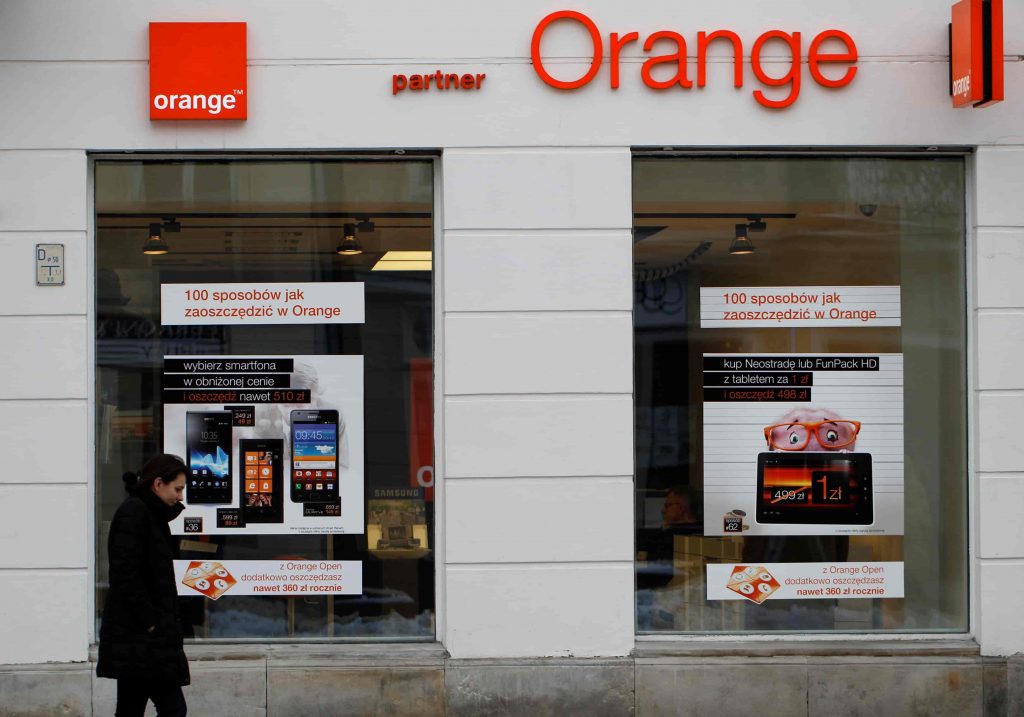
2. Where To Buy Orange eSIM
To access Orange eSIM profiles for iPhone & Pixel compatibility, specialized eSIM retailers are the way to go:
- Online: You can order an Orange Holiday eSIM online from the Orange website or from other retailers such as Europe eSIM. The eSIM will be sent to you by email with a QR code that you can use to download it to your phone.
- Orange retail stores: If you are in Europe, you can also purchase an Europe eSIM from an Orange retail store or right at airport kiosks.
Purchasing directly from Orange as a traveler can require local registration. So reputable eSIM providers offer a more convenient way to order Orange eSIM connectivity.
Stay connected across Europe with our eSIM plan featuring a phone number. Enjoy seamless connectivity, crystal-clear calls, and lightning-fast data speeds, all powered by the reliable Orange network.
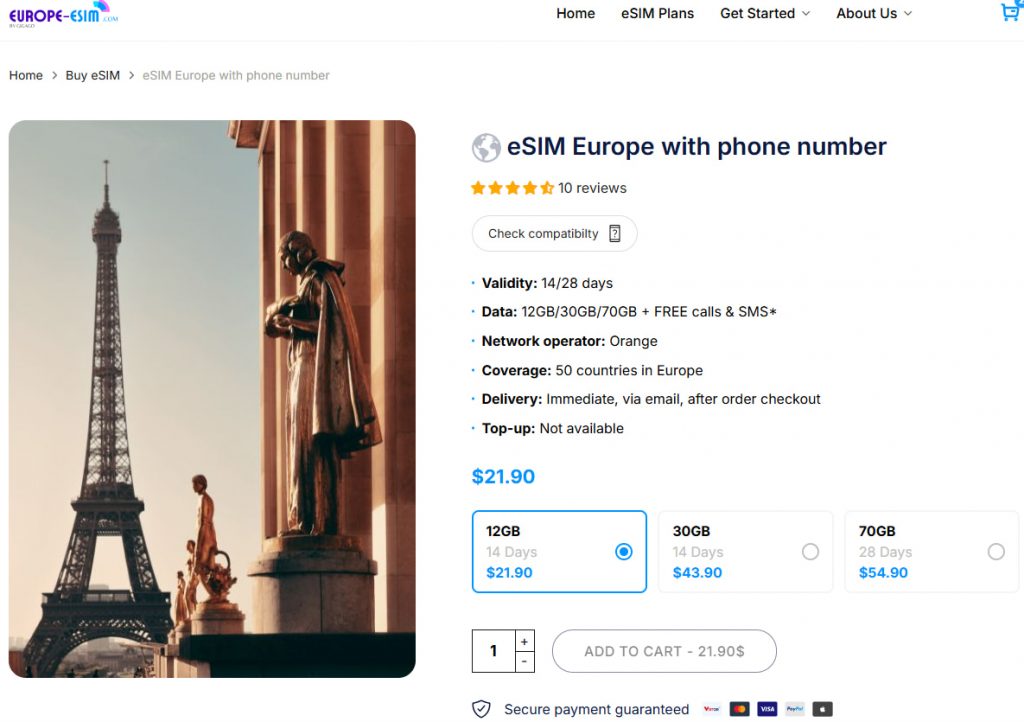
Why Choose Us?
- No Account Needed: Skip the login hassle—purchase easily and quickly!
- Instant Activation: Get connected right away.
- Phone Number: Always reachable, no matter where you are.
- Affordable Plans: Ideal for travelers and remote workers.
Get Started Today! Purchase Your eSIM Now!
VIII. How to Install and Activate Orange SIM Card
When getting started with your Orange SIM, just follow these quick steps to install and activate it:
1. How to Install and Activate an Orange SIM Card
- Insert – Insert your Orange SIM card into your phone’s SIM slot
- Power On Phone – Your phone will automatically read the SIM
- Connect – Select Orange network and input SIM PIN when prompted
- Configure APN – For data, manually enter APN as ‘orange’
- You’re Connected – Start using your Orange Europe SIM!
That’s all it takes to get up and running with an Orange SIM card in Europe. You’ll receive detailed instructions specific to your SIM card as well that outline the process.
2. How to Install and Activate Orange eSIM
To connect with an Orange eSIM, you’ll install your cellular plan profile slightly differently:
- Order eSIM – Purchase compatible EU Orange eSIM plan
- Receive QR Code – eSIM retailer emails QR activation code
- Scan QR Code – Go to cellular settings and scan code
- Activation – Profile configures network access and restarts
- Connect – Orange eSIM plan activated and ready!
Rather than swapping physical SIMs, your eSIM plan securely downloads over the air. You’ll still configure APN settings the same.
Both SIM card and eSIM options work reliably using Orange’s mobile networks locally across Europe.
IX. Orange Call & SMS Rates in the EU
For prepaid SIM card rates on Orange Europe, here is an overview of calling, texting, and data pricing:
- Calls within the EU have max roaming charge of €0.19/min, equal to domestic rates.
- SMS roaming max is €0.06/text, same as local rates.
- Data roaming regulated at €0.00512/MB but most plans include unlimited EU data.
- Rates only apply when roaming between EU/EEA countries, not within the country visited.
- Applies whether an Orange customer from France uses their phone in Spain, or vice versa.
So Orange keeps calling and messaging rates low across Europe. Most prepaid SIMs come with bundles of minutes and texts minimizing any overage fees as well during your trip + EU roaming.
X. How to Top Up Your Orange SIM Card
To add more calling/text credits or data bundles, topping up an Orange SIM card is easy:
- Online – Using your phone, access an Orange recharge PIN via online top up sites
- Vouchers – Purchase top-up vouchers at Orange shops and local retailers
- Expiry – Credits typically expire after 4 – 12 months depending on the amount
- Autos – Re-ups like Extra Time automatically renew data/mins every month
Online top ups are fastest if needing more data mid-trip. But voucher cards bought locally can work too in a pinch.
Expiry dates allow topping up even if traveling a few times across the year. And auto top up settings can simplify recharging monthly.
XI. FAQs
Does my phone need to be unlocked to use Orange SIM/eSIM?
Yes, you’ll need an unlocked device to insert an Orange SIM/eSIM. Most American and Canadian phones are unlocked by default. Some EU and Asian models may need officially carrier unlocked first though. iPhones are unlocked so long as you don’t owe any payments.
How long does an Orange SIM card last?
Orange prepaid SIM cards for tourists like Holiday Europe SIMs have set validity periods, usually 7 or 14 days depending on plan. You can add data bundles or extra time to extend longer. Resident accounts have monthly autorenewals as well.
Is my Orange SIM 5G compatible?
Currently Orange doesn’t have much coverage for 5G across Europe. A few major cities may access 5G but networks are still rolling out. 4G LTE speeds meet most needs. An LTE SIM card still works when networks upgrade but don’t expect broad 5G.
XIII. Final Words
An Orange SIM card or eSIM provides reliable connectivity across extensive Orange networks in Europe. With fast speeds, EU roaming convenience, and quality prepaid plans, Orange ticks all the boxes for travelers needing connectivity. Order an Orange Europe SIM or eSIM pre-trip for seamless connectivity when traveling Orange countries. Stay connected without costly roaming fees using Orange SIM cards for Europe.
